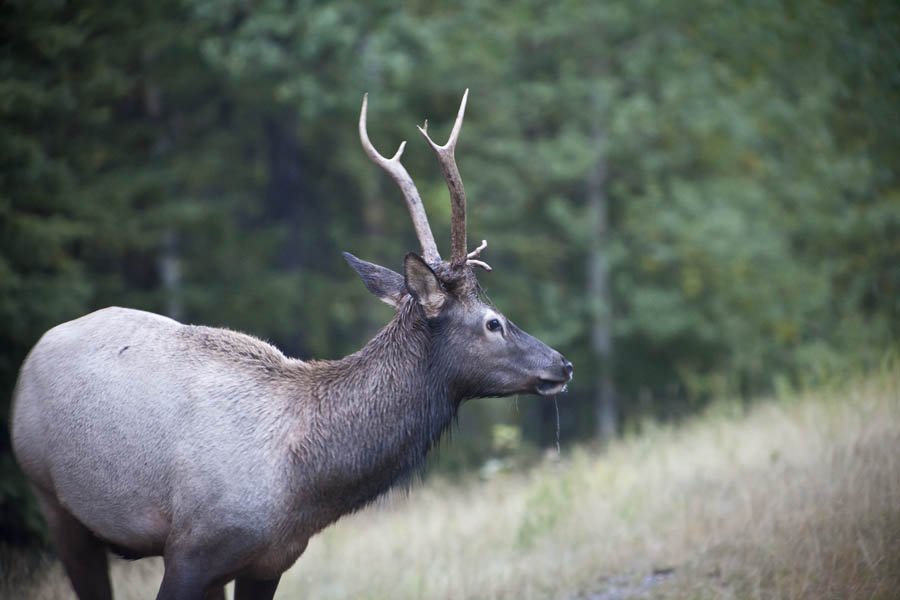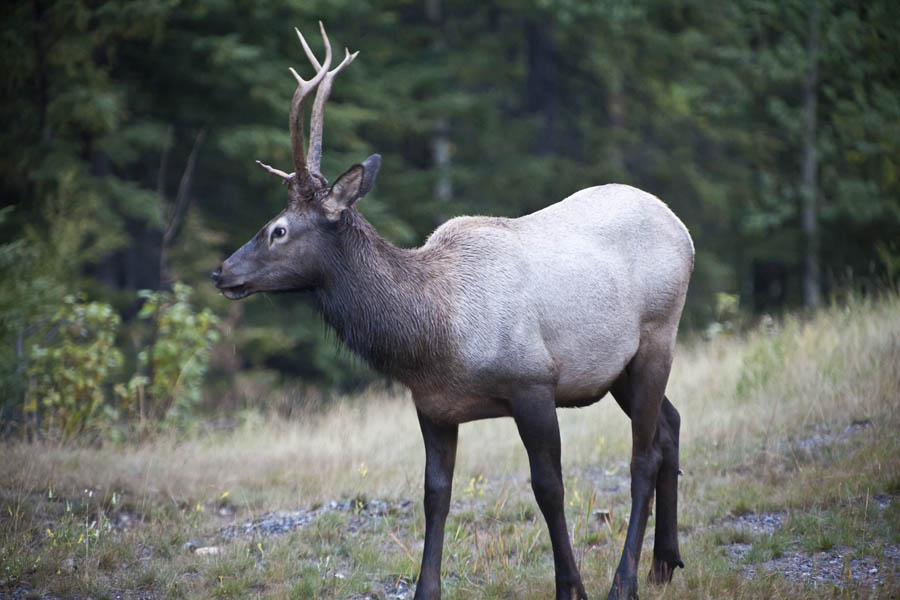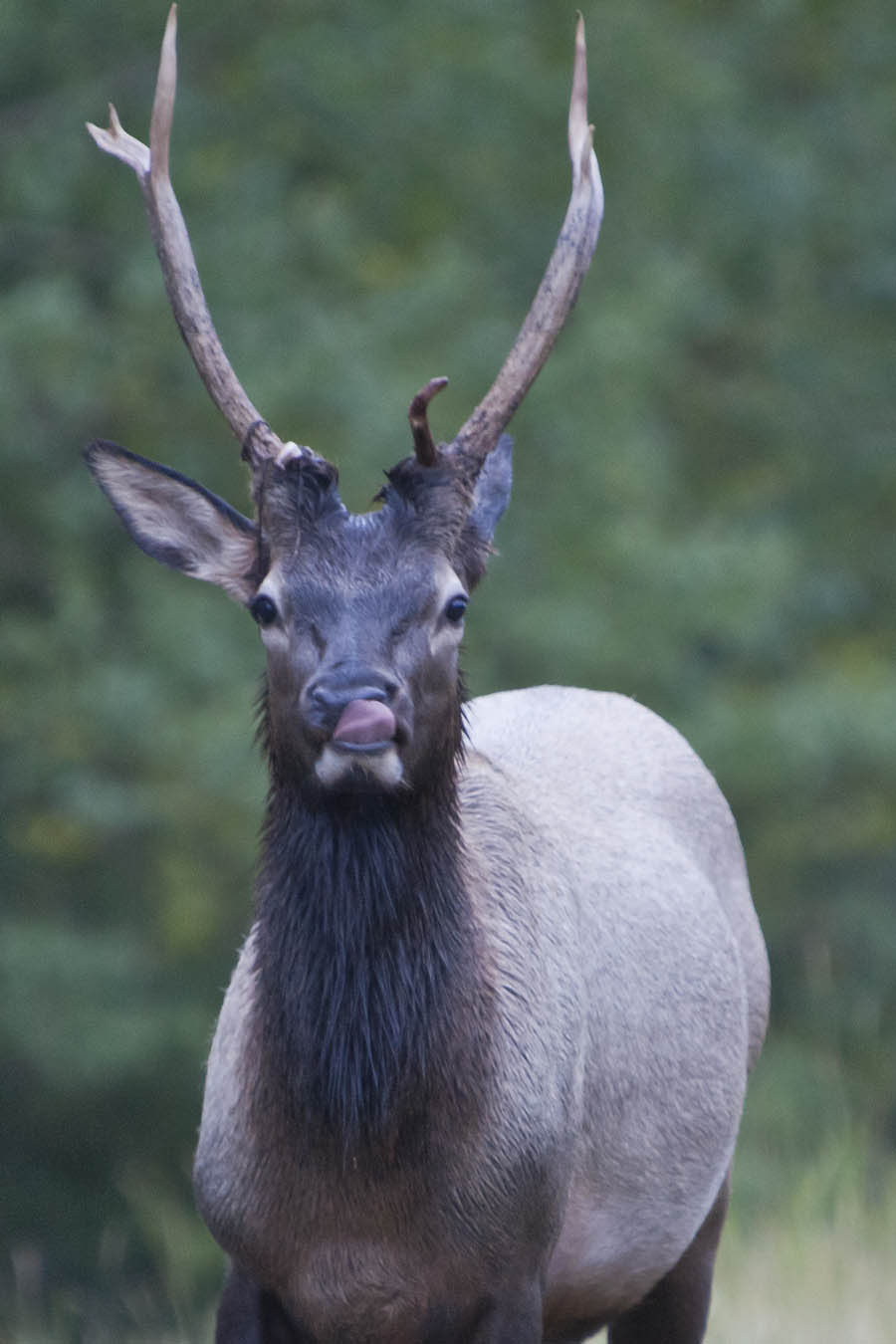I went out early this morning in search of a large bull elk, seen recently in the area by a number of my friends. We see the female elk in great numbers year round, but the bulls, particularly the large ones are more difficult to find. Except in September, during the rut (mating season). Alas, I was not successful in finding a big bull but I did come across a younger specimen on my way home.
It was quite overcast and dark this morning, making picture taking a bit more challenging. I was able to get some good shots of the young elk using a large aperture, f2.8 and a very high ISO, 3200. Shutter speeds were still quite slow (1/50 sec) so I had to brace myself against the car to keep everything steady. Ideally, I would like to have a shutter speed of at least 1/500 sec. for wildlife to really “freeze” the subject. Today that was not going to happen.
Here are a quick three for today. I’ll keep my eye open for the big fella; hopefully I’ll get to post him sometime soon.



Besides his size, an elk’s maturity and preparedness to mate can be gauged by the development of his antlers. This one is sporting “3 points”, the number of tines on each antler. Count them! A fully matured bull can have 8 tines on each side and that is a big rack. Bulls compete for the right to mate with the biggest and most aggressive claiming all the cows, his harem. They don’t share. A young elk this size is very unlikely to participate in the rut. Not his year anyway.
Here’s a little more about the elk and their mating habits if you are interested in reading further.
During the late summer the majority of the bulls are segregated from the cows, in what is known as bachelor groups. They will feed in the morning and the evening when the temperatures are cool, and then retreat to the timber to rest in the shade. Their antlers have grown back after shedding them in April and May, and are still covered in velvet. The equinox is approaching and the daylight is getting less and less every day. The shortening of daylight will trigger the elk’s biological clock and the rut will begin. As the light decreases in the fall, glands are stimulated (by the amount of daylight which comes in through the eyes) and these glands will release hormones. In the cows, this will begin the oestrous cycle. The bulls’ antler growth will stop, the velvet will dry up, their necks will swell, and their testicles will fill up with semen.
When the bulls first shed their velvet, their antlers are white. During the rut the antlers will darken, or become stained from dirt, mud, bark, sap, and blood, turning them to various shades of browns to almost black. The bulls will be less and less social with their summer time companions. They will soon begin to seek out the cows and form their harems. Only the largest and stongest of the bulls will become herd bulls and be able to take and hold a herd of cows. This is nature’s way of insuring that only the best bulls do the breeding. Their genes can now be passed on to future generations of elk.
During the rut, a bull’s neck and hump may swell to twice their normal size. The hair on the mane will grow darker and longer, and the antlers will be dark with white tips. All these features will help the bulls to look more massive than they already are. He will be very aggressive with outstretched neck, raised hackles, deep bugle, and violent shaking of his antlers. This will show him as being an overwhelming opponent, and not to be messed with.
Courtesy of http://elkhunter2.tripod.com

Peter – nice shots. I like what you have done on the colour side. By the way, a young male, but he looks to be licking his chops! I wonder what’s going on.